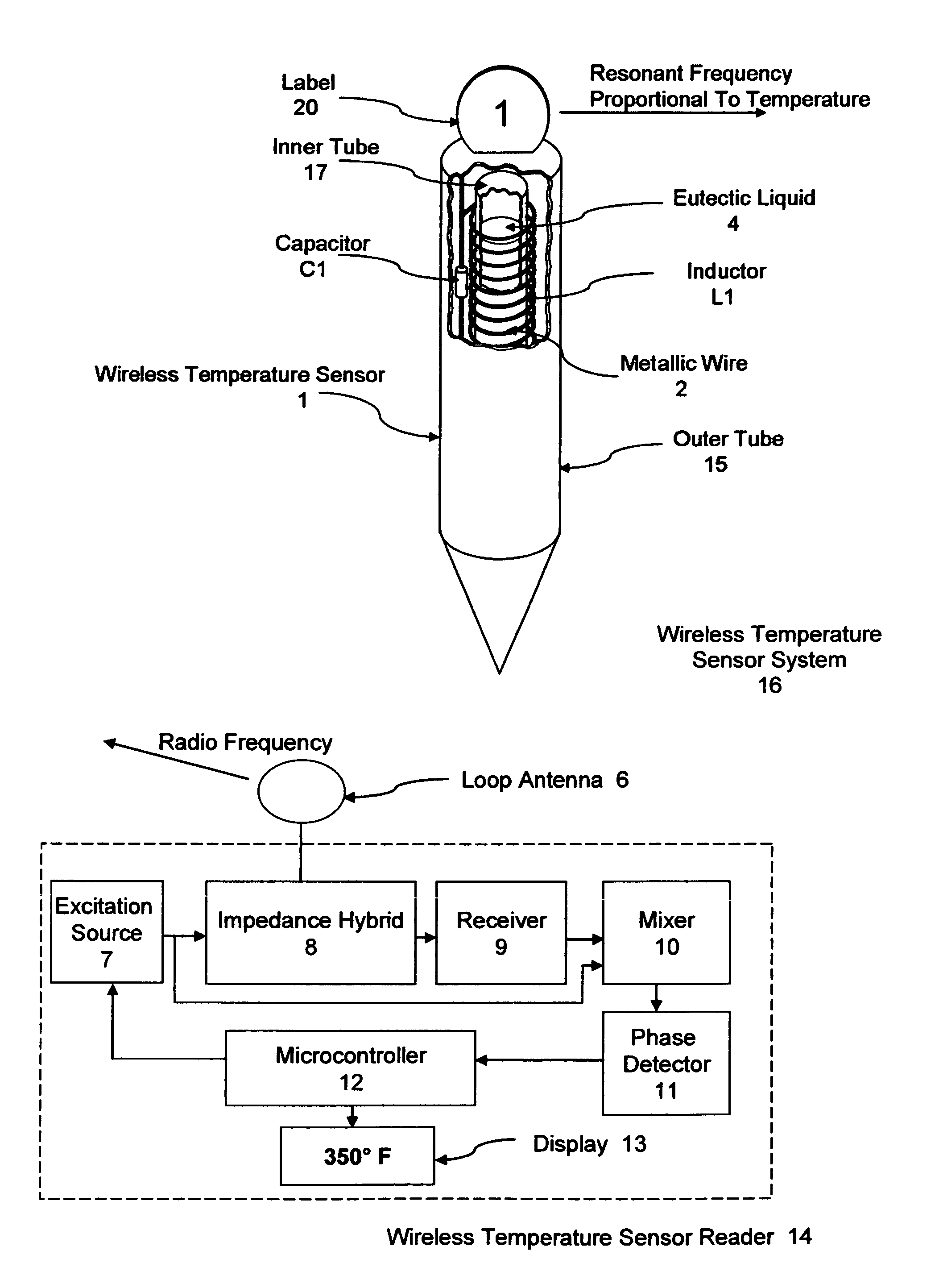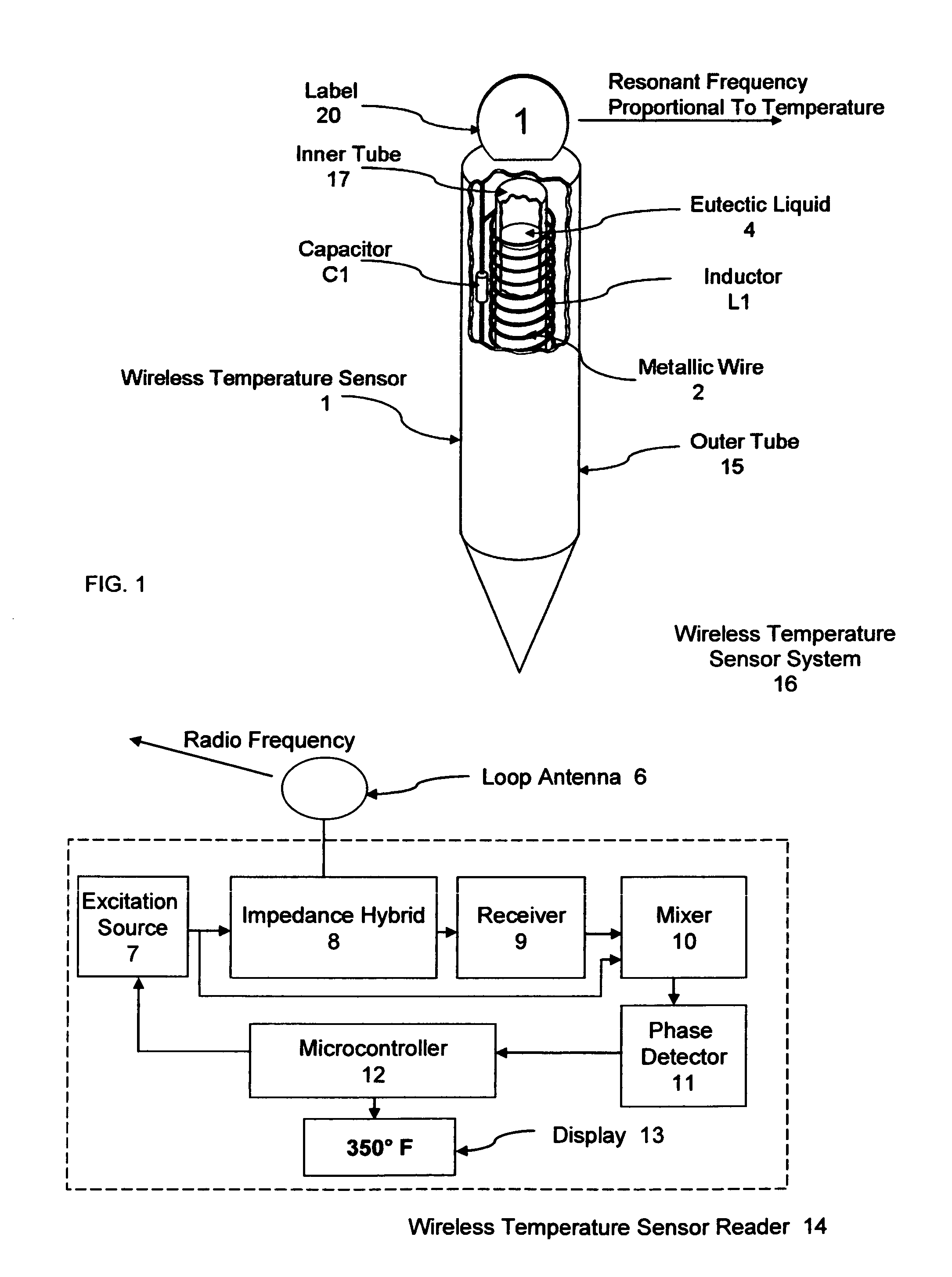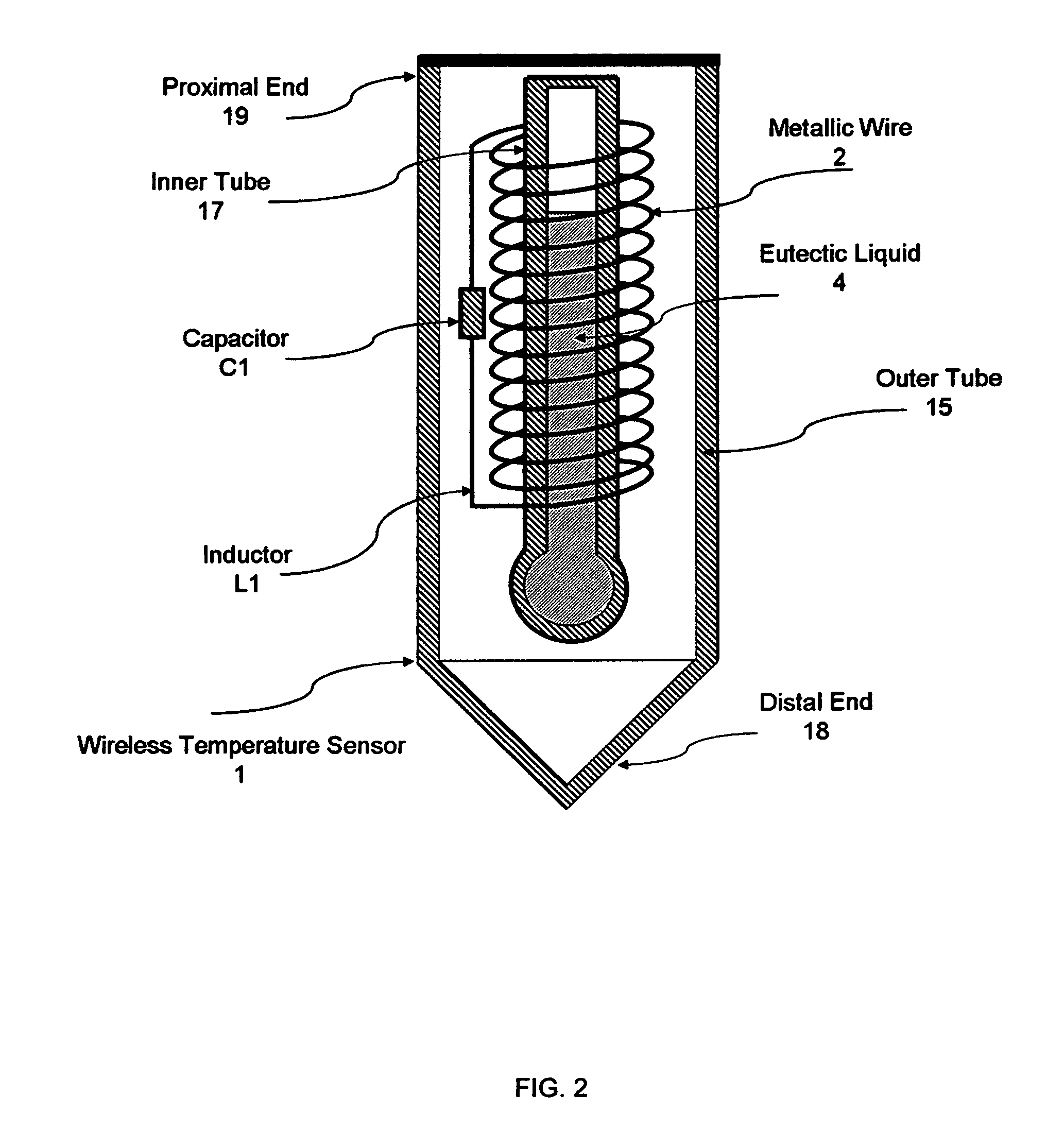Wireless remote passive temperature sensor for monitoring food
a passive temperature sensor and wireless technology, applied in the field of wireless temperature sensors, can solve the problems of inconvenient installation and removal, wireless temperature sensors that require semiconductor components to operate, and systems that have not been successfully developed, and achieve the effect of increasing inductan
- Summary
- Abstract
- Description
- Claims
- Application Information
AI Technical Summary
Benefits of technology
Problems solved by technology
Method used
Image
Examples
Embodiment Construction
[0016]The present wireless temperature sensor has been developed principally for use while cooking to permit remote monitoring of food temperature.
[0017]Consequently the description of the invention will be specifically with reference to such a food monitoring application although it will be readily apparent that many other uses are possible.
[0018]FIG. 1, shows a wireless temperature sensor system 16, in accordance with certain preferred embodiments of the present invention. A wireless temperature sensor 1, as shown, is preferably inserted into the food being cooked for continuously monitoring the internal temperature of the food. The wireless temperature sensor 1, comprises metallic wire 2, wrapped around a non-metallic inner tube 17, capable of withstanding repeated exposure to 500° F. for extended periods of time. The coiled wire 2, wrapped around the inner tube 17, creates an air core inductor L1. The ends of the wire 2, are connected to capacitor C1, to create an LC “tank” circ...
PUM
 Login to View More
Login to View More Abstract
Description
Claims
Application Information
 Login to View More
Login to View More - R&D
- Intellectual Property
- Life Sciences
- Materials
- Tech Scout
- Unparalleled Data Quality
- Higher Quality Content
- 60% Fewer Hallucinations
Browse by: Latest US Patents, China's latest patents, Technical Efficacy Thesaurus, Application Domain, Technology Topic, Popular Technical Reports.
© 2025 PatSnap. All rights reserved.Legal|Privacy policy|Modern Slavery Act Transparency Statement|Sitemap|About US| Contact US: help@patsnap.com



